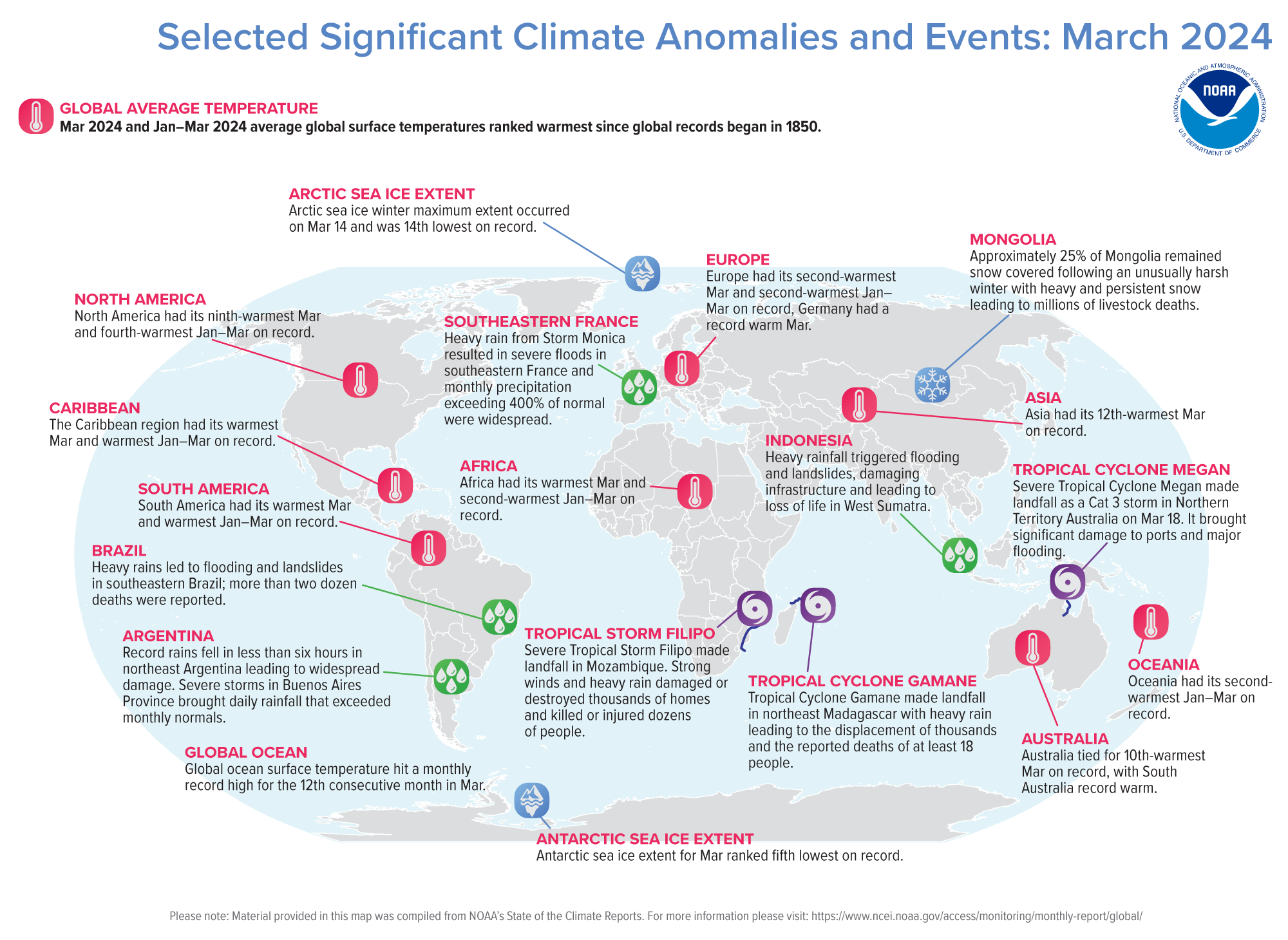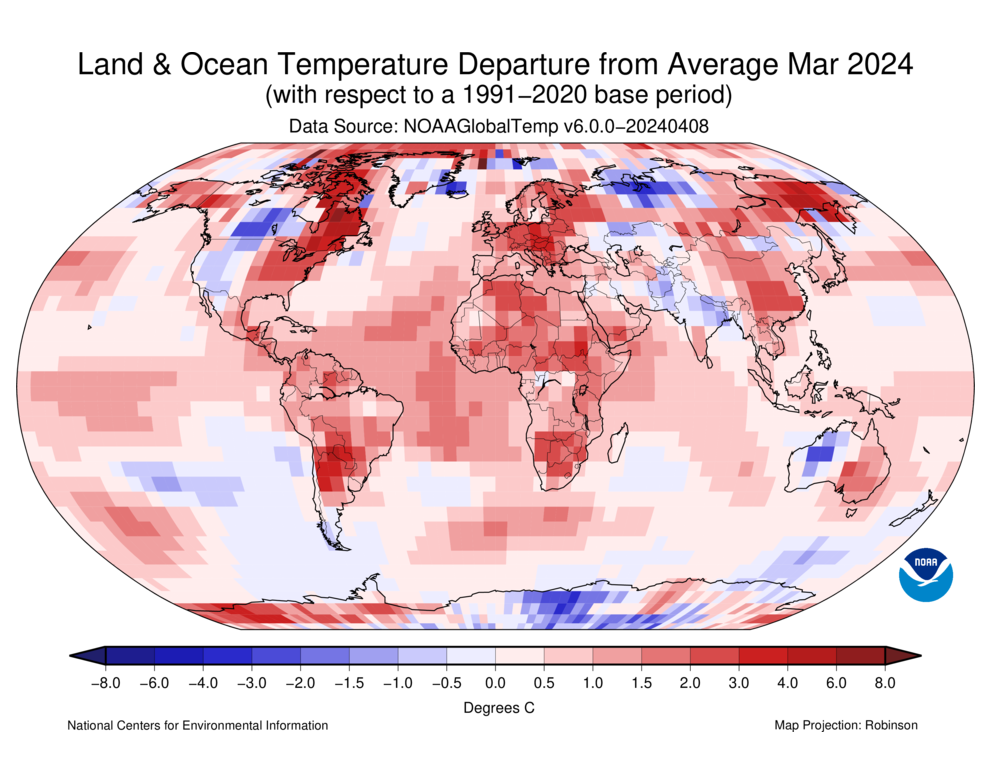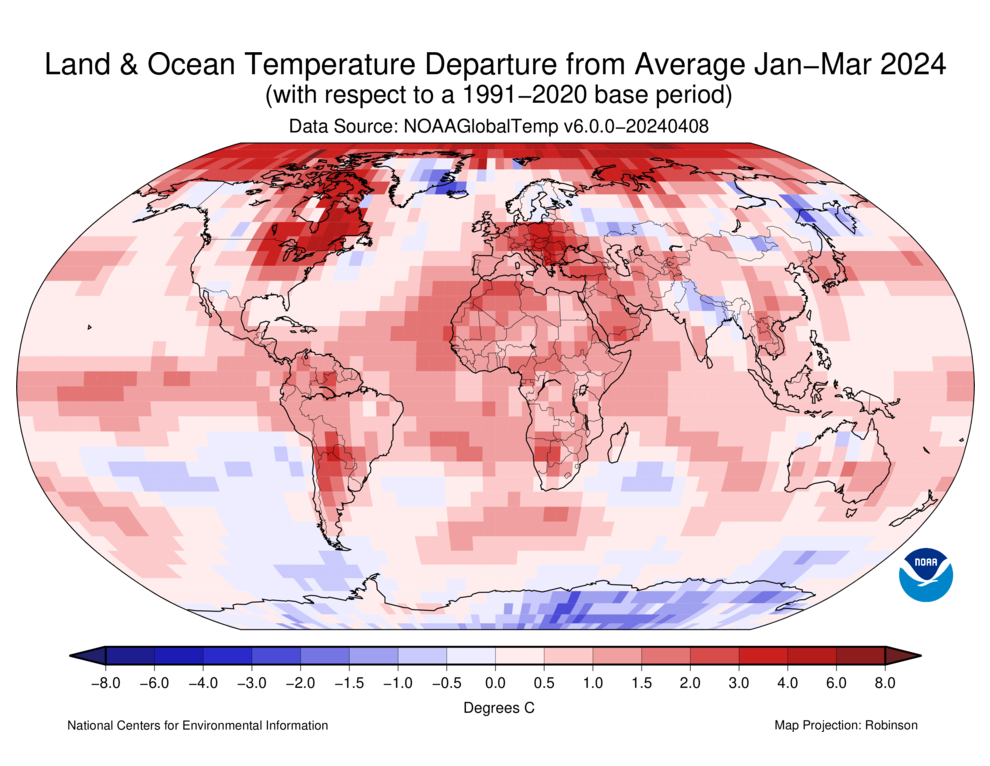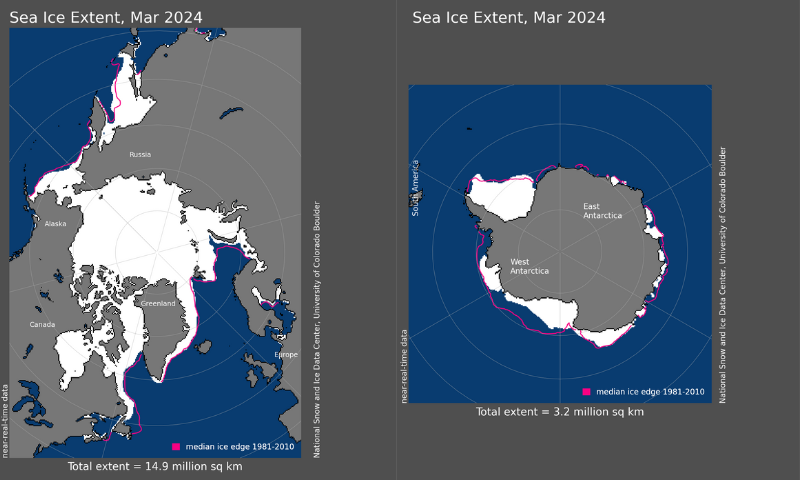Warmest March on record makes 10 months of record-setting temperatures

Highlights:
- Temperatures were above average over much of the globe, while parts of western North America, central Asia, and western Australia were cooler than average.
- Northern Hemisphere snow cover extent and Antarctic sea ice extent were below average, the latter ranking fifth lowest on record.
- Global tropical cyclone activity was below average, with three storms making landfall (Filipo in Mozambique, Gamane in Madagascar and Megan in northern Australia).

Temperature

The March global surface temperature was 2.43°F (1.35°C) above the 20th-century average of 54.9°F (12.7°C), making it the warmest March on record and the 10th consecutive month of record-high global temperatures. According to NCEI’s Global Annual Temperature Outlook, there is a 55% chance that 2024 will rank as the warmest year on record and a 99% chance that it will rank in the top five.
March temperatures were above average across most of Africa, Europe and South America, as well as over eastern North America, eastern Asia and eastern Australia. In contrast, parts of western North America, central Asia and western Australia were cooler than average. Africa and South America had their warmest March on record while Europe had its second warmest. Sea surface temperatures were above average over most areas (and record warm over the tropical Atlantic Ocean), while much of the Southern Ocean and parts of the southeastern Pacific and southern Indian Oceans were below average. The global oceans have now been record-warm for an entire year (April 2023 through March 2024).
Temperatures in the mid-troposphere (approximately 2–6 miles above the Earth’s surface) were record warm in March, according to satellite data from NESDIS. Each of the past nine months set global records for the mid-troposphere.

The year-to-date (January–March) global surface temperature was 2.43°F (1.35°C) above the 20th-century average, making it the warmest such period on record. South America had its warmest year-to-date period, whereas Africa, Europe and Oceania were second warmest.
Snow Cover
Northern Hemisphere snow cover extent in March was below the 1991–2020 average and the eighth smallest on record. Both Eurasia and North America were below average (by 220,000 and 320,000 square miles, respectively). In general, much of Europe and the eastern United States were below average whereas the western United States was above average.
Sea Ice

Global sea ice extent was the eighth smallest in the 46-year record at 6.97 million square miles, which was 410,000 square miles below the 1991–2020 average. Arctic sea ice extent was slightly below average (by 60,000 square miles), whereas Antarctic sea ice extent was much below average (by 350,000 square miles), ranking fifth smallest on record.
Tropical Cyclones
Four named storms occurred across the globe in March, which was below the 1991–2020 average of six. The only major storm was Severe Tropical Cyclone Neville, which brought high surf conditions to northwestern Australia. There were two other storms in the South Indian Ocean: Filipo, which brought strong winds and torrential rains to Mozambique; and Gamane, which brought strong winds and heavy rains to Madagascar.
For a more complete summary of climate conditions and events, see our March 2024 Global Climate Report or explore our Climate at a Glance Global Time Series.



